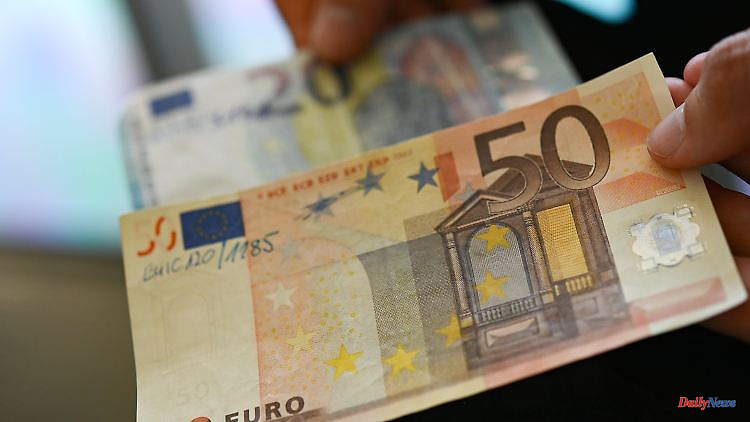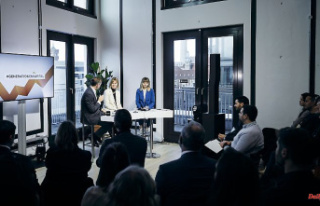Cheap flowers are booming: Although the volume of counterfeit money is far from being as high as it was before the Corona period, the number of copies of counterfeit euro bills is increasing again. However, cashless payments are making things more and more difficult.
Actually, it is very easy to recognize counterfeit money: Two 12-year-olds in Kassel were taken aback when a stranger offered them a 50-euro note at a Christmas market to buy something. To be on the safe side, they asked a shop if there was anything wrong with the bill. Instead of giving the man the change he requested, the boys informed the police.
Criminals take advantage of the fact that folk festivals and Christmas markets, where a lot of money is traditionally paid for with notes and coins, were and are being held again when the corona restrictions expired: counterfeit money appeared again in Germany and Europe last year. "This is probably due to the fact that the corona restrictions of the two previous years were largely lifted and folk festivals or Christmas markets took place again, where most payments were made in cash," said Bundesbank board member Burkhard Balz.
In Germany, the police, retailers and banks withdrew almost 44,150 counterfeit euro banknotes from circulation last year, according to the Bundesbank. That was 5.2 percent more than in the previous year. "Overall, however, the volume of counterfeit money remains very low: In purely mathematical terms, there were only five counterfeit banknotes per 10,000 inhabitants in 2022," said Balz. For comparison: In 2015, the Bundesbank registered 95,400 counterfeit euro notes in Germany, more than at any time since euro cash was introduced in 2002.
"The Corona years were exceptional years in terms of cash," says Balz. "We will only see in one to two years whether the volume of counterfeit money in Germany has leveled off at a low level." This also depends on how cash use develops. The fact that cashless payments are increasingly being made could make life more difficult for counterfeiters.
However, the calculated damage as a result of counterfeit money in Germany increased significantly: from 1.9 million in 2021 to 2.7 million euros now. According to the Bundesbank, this was mainly due to the fact that in several cases high-value goods such as watches and cars were paid for with counterfeit 100 and 200 euro banknotes. Because such large denominations are rarely used, many people are not familiar with them. This is what scammers take advantage of.
However, it is still mainly the 20 and 50 euro notes that are counterfeited, which are more common in everyday use. Together they accounted for 69 percent of all the false notes discovered in Germany in 2022.
Also in Europe as a whole, these two denominations make up almost two-thirds of the 376,000 counterfeit euro notes that have been withdrawn from circulation. The number of euro blossoms increased by 8.4 percent compared to the previous year. The volume of damage rose from 17.5 million to 21.5 million euros.
A fashion of recent years seems to be losing its appeal to criminals: the proportion of forged prints with the inscription "Movie Money" or "Prop copy" among the flowers seized in Germany fell from 22 percent to 17 percent. Such notes are offered on the Internet as play money or film props. Fraudsters have been selling these relatively easily recognizable counterfeits without security features such as watermarks or hologram windows on a large scale for some time. "The issue has now reached the retail trade, and at the same time the pressure from the law enforcement authorities is increasing. Placing Movie Money on the market can be a criminal offense," explained Balz. Counterfeit money will not be replaced.
This also applies to counterfeit coins, which keep ending up in collection bags or donation boxes. Because charitable organizations collected suspicious coins for logistical reasons in the pandemic years and only handed them over to the Bundesbank with a delay, the number of counterfeit coins in Germany shot up: the Bundesbank counted almost 73,400 counterfeit euro coins, compared to 41,100 a year earlier . As with banknotes, the probability of getting a counterfeit coin is comparatively low. Arithmetically, there were nine counterfeit coins per 10,000 inhabitants in Germany.












